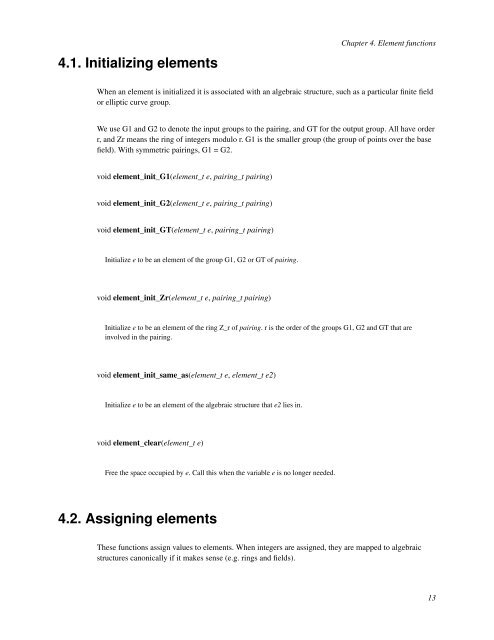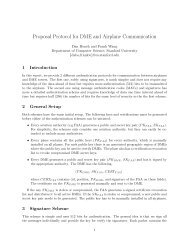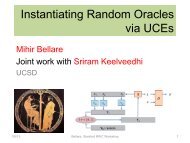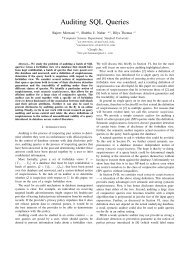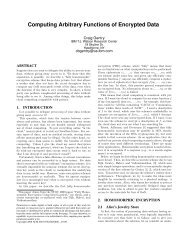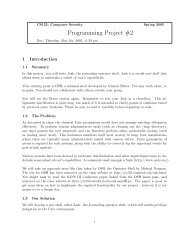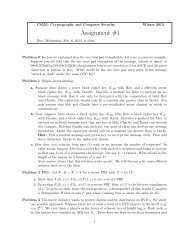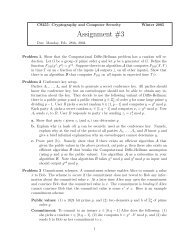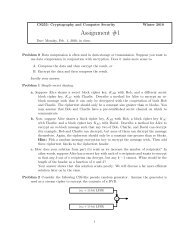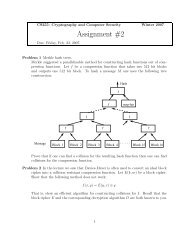PBC Library Manual 0.5.11 - Stanford Crypto Group
PBC Library Manual 0.5.11 - Stanford Crypto Group
PBC Library Manual 0.5.11 - Stanford Crypto Group
You also want an ePaper? Increase the reach of your titles
YUMPU automatically turns print PDFs into web optimized ePapers that Google loves.
4.1. Initializing elements<br />
Chapter 4. Element functions<br />
When an element is initialized it is associated with an algebraic structure, such as a particular finite field<br />
or elliptic curve group.<br />
We use G1 and G2 to denote the input groups to the pairing, and GT for the output group. All have order<br />
r, and Zr means the ring of integers modulo r. G1 is the smaller group (the group of points over the base<br />
field). With symmetric pairings, G1 = G2.<br />
void element_init_G1(element_t e, pairing_t pairing)<br />
void element_init_G2(element_t e, pairing_t pairing)<br />
void element_init_GT(element_t e, pairing_t pairing)<br />
Initialize e to be an element of the group G1, G2 or GT of pairing.<br />
void element_init_Zr(element_t e, pairing_t pairing)<br />
Initialize e to be an element of the ring Z_r of pairing. r is the order of the groups G1, G2 and GT that are<br />
involved in the pairing.<br />
void element_init_same_as(element_t e, element_t e2)<br />
Initialize e to be an element of the algebraic structure that e2 lies in.<br />
void element_clear(element_t e)<br />
Free the space occupied by e. Call this when the variable e is no longer needed.<br />
4.2. Assigning elements<br />
These functions assign values to elements. When integers are assigned, they are mapped to algebraic<br />
structures canonically if it makes sense (e.g. rings and fields).<br />
13


